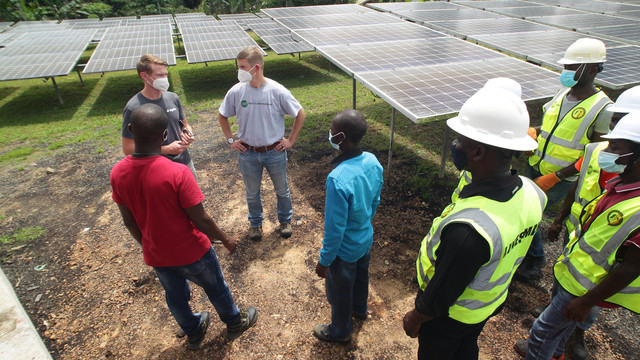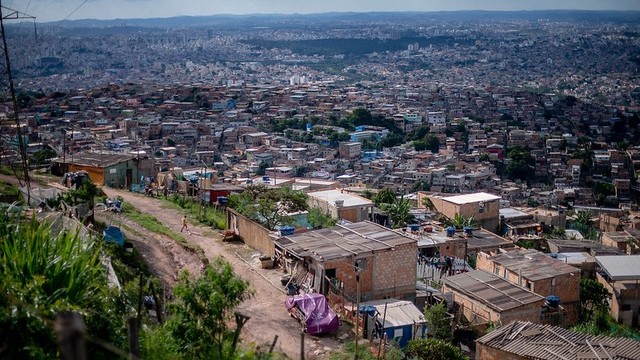A sustainable ocean by 2030
A Sustainable Development Goal for oceans, seas and marine resources is a significant milestone, but how will it be financed and who will benefit?


A fish market in Vĩnh Trường, Vietnam. More than 300 million people are directly or indirectly employed by the fisheries sector, and must be addressed by the oceans SDG (Photo: Khánh Hmoong, Creative Commons, via Flickr)
The world's oceans and seas have been ignored by mainstream policymakers for too many years and were hardly mentioned in the Millennium Development Goals (MDGs). This year brings in a new era for the world's oceans as the global community signs up to the Sustainable Development Goals (SDGs).
Goal 14 calls on states to "conserve and sustainably use the oceans, seas and marine resources for sustainable development." This is a significant milestone.
Marine and coastal resources provide millions of impoverished people across the world with livelihoods, and provide a range of critical 'ecosystem services', from biodiversity and culture to carbon storage and flood protection, recreation and amenity opportunities. More than one billion people in the world rely on fish as their main or only source of animal protein, and more than 300 million are directly or indirectly employed by the fisheries sector.
The consequences of continued inaction would have been catastrophic. Unless threats to ocean and seas are reversed, millions of livelihoods could be lost and many ocean-based economies, particularly small island developing states (SIDS) could lose out.
2015: a new era for the ocean
This year, for the very first time, our ocean, sea and coastal ecosystem resources have received the attention they deserve and have been recognised as one of the key pillars of sustainable development. I even heard someone compare this era for oceans with that of the 1990s for forests. Perhaps blue is the new green.
But the journey to a more sustainable approach to our marine resources has only just begun. There are at least seven agreed targets that need to be delivered by 2030. These include preventing marine pollution, restoring and strengthening the resilience of marine and coastal ecosystems, restoring fish stocks to sustainable levels, and so on.
The big question is, what does it take to implement this goal? Let me outline a few key issues I think are critical from an economic point of view.
Bridging the finance gap
One of the most debated issues is finance. Transitioning from the current undesirable state of the oceans and seas to a more desirable and sustainable state comes at a cost. While there hasn’t been a rigorous study of the cost of Goal 14, it is likely to cost several hundred billion dollars over the next 15 years.
According to some estimates, the level of investment needed to restore global fisheries is in excess of USD $200 billion – making what could be seen as a convenient argument for increased official development assistance (ODA).
However, records show that ODA is declining or stagnating in both absolute and relative terms. In order to bridge the gap in the finance needed to transition to sustainability, alternative financing opportunities, including fiscal reforms by national governments and private sector investments, must all be explored.
Fiscal reforms such as license fees, taxes and fiscal allocations can generate substantial resources. Not only can such instruments discourage destructive behaviours such as overfishing, but also generate resources that can be re-invested to enhance the resilience and provisioning services of oceans and seas. In the Pacific alone, licence fees for tuna fisheries generated more than $230 million in 2012.
Similarly, an increasing number of impact investors (those seeking financial, ecological and social returns) indicate that private sector investment can generate significant financial resources to complement public sector investment.
Capitalising on blue capital
Attracting public and/or private investments towards enhancing marine and coastal ecosystem services is not straightforward. Any rational investor (public or private) will ask whether a resource is investable or not.
For that reason, donors and researchers should work to estimate the economic benefits. This would help make a compelling business case as to why private investors should invest, but also allow the estimated economic values to be mainstreamed into national accounts, giving policymakers an incentive to rebuild where resources are depleted or degraded.
Promoting financial inclusion
Developing effective marine and coastal resource management regimes depends crucially on access to finance for the people who use the resource (ie fishers).
Often, coastal communities bear the burden of (at least) short-term economic losses as a result of command-and-control type natural resource management regimes. And it is far harder for small-scale fishers to obtain access to finance than industrial fishers. This is a classic characteristic of financial exclusion.
Financial exclusion can arise for a range of reasons, including a lack of, or limited access to, suitable products and services due to difficult lending conditions; limited skills and knowledge about negotiating for formal services; limited information and knowledge about products and services; and the inability to choose between alternate products and services due to low financial literacy.
As a result many fishers seek loans from (mainly) informal sources. This means resource users are obliged to pay back their debts – even if the fishing season is officially closed. This makes it difficult for fishers to stick to the rules, and risks that they continue fishing and damaging fish stocks, undermining the effectiveness of fisheries management regimes. Tackling financial exclusion by promoting inclusive financial systems is crucial.
It is only through such an inclusive approach that Goal 14 will support the achievement of the other SDGs and ensure that no one is left behind.
Essam Yassin Mohammed (eymohammed@iied.org) is senior researcher in environmental economics in the Sustainable Markets Group.



